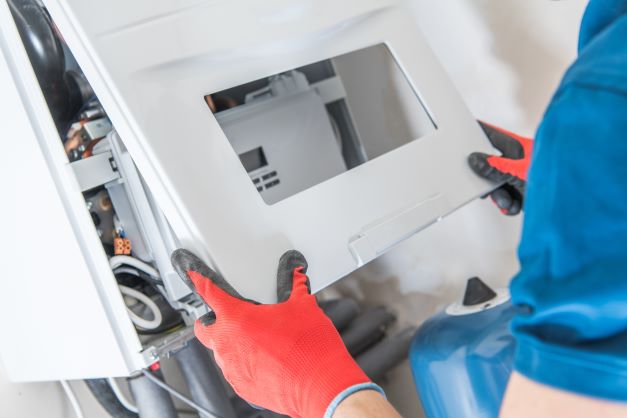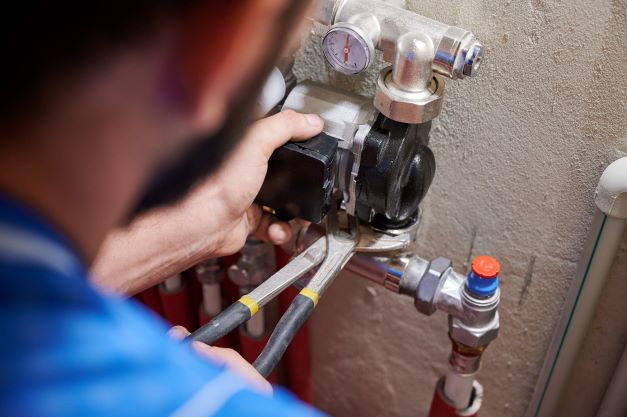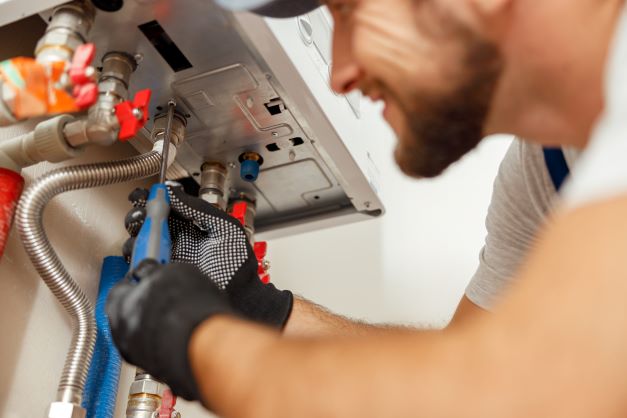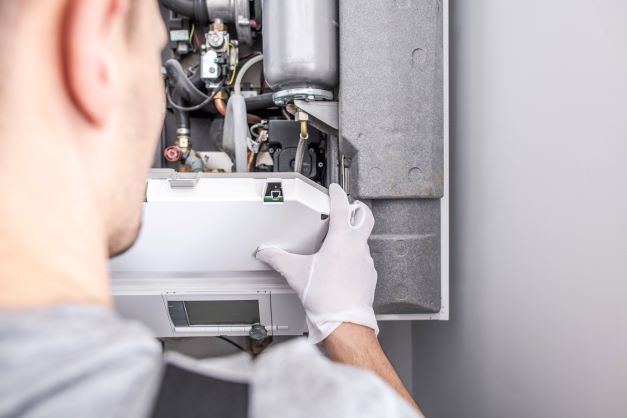A central heating system generates heat at a single location (such as a furnace or boiler basement) then distributes it via air, steam or water to the rest of the building.
There are many styles of central heating systems available, each with its unique advantages and disadvantages. Each system must be tailored to the building it is installed in and sized correctly to meet the needs of its inhabitants.
Types
The central heating system plays an important role in your home. It heats water or air using a variety of fuels. This system can be installed in many ways depending on the structure of your home and its heating needs.
Gas and electric are the most common central heating systems. However, hybrid options exist that combine a furnace with radiant or heat.
A gas-based boiler, also known as a condensing combi boiler, is a popular choice for a central heating system. It heats water from a main gas supply and provides hot water to radiators throughout your home. In this system, a thermostat controls the hot water supply to each room.
Another popular option is a boiler that runs on oil or liquefied petroleum gas (LPG). These fuels are very efficient and offer excellent performance. These fuels are generally less expensive than others, but they can be difficult to install and require storage in a tank in your garden.
Finally, there are also heat pumps that work in reverse. These systems can be used to heat or cool, and they can also be used to reduce energy costs in winter.
The overall design of a central heating system is crucial to its efficiency. A low-efficiency system can waste fuel and heat through high chimney drafts. A more efficient system can save up to 60% or more in fuel usage.
For example, an older furnace with poor insulation could be wasting money on energy because the air coming through the vents is warm when it doesn’t need to be. A modern, more efficient furnace will have better insulation and be able to use less fuel.
Furnaces are the most common type of central heating in America, with a typical natural gas-powered furnace providing up to 98% efficiency. They also use ductwork for air distribution, which can help keep your home warm and cool.
Although central heating systems can be expensive, they are essential to keep your family warm all year. These systems come with their own advantages and disadvantages. It’s best to talk to a professional before you decide which one is right for you.
Installation
Central heating systems distribute heat throughout a building. They can use gas, electricity, or oil as their primary energy source. They may also use steam or hot air to distribute heat.
Installing a central heating unit is a complex process that involves pipework and ductwork. It is best to hire a qualified HVAC professional to handle the job. They will evaluate your home and recommend the right size furnace for you. They will also recommend ductwork and how it should be installed.
Although it is a significant investment, it will pay off in long-term savings. It will keep you warm during the coldest months and will save you money on your energy bills.
It is important to have your central heating system maintained and repaired regularly. The parts that make up the heating system can wear down over time and cause sludge to build up in the system. The entire system will eventually have to be replaced.
In general, you should replace your central heating system when it is 10 to 15 years old. This is when most parts begin to wear down and lose efficiency.
The installation of a new system should take about one or five days, depending on the type of heating system you have. During this time, your heating engineer will work to install the radiators and pipework in each room around your property.
Your new central heating system will be turned ON once the work is complete. You will then be able to experience the warmth it provides. It is important to have your system checked by a professional to ensure that all parts work properly and that there are no repairs.
A professional heating contractor will be able perform all inspections and diagnose any issues before the installation can begin. This will ensure a smooth installation and a comfortable home.

Maintenance
A central heating system is a network of pipework, radiators and a boiler, which provides heat and hot water to the entire house. It can be powered by electricity, natural gas or fuel oil.
If you don’t perform regular maintenance on your system, it can be costly to repair or replace. This is because it’s easy for parts to break down, making the unit less efficient.
The good news is that it’s a fairly simple process to keep your system in top shape. Just like any other major appliance, your furnace needs to be inspected regularly and tuned up. This includes changing filters and checking drains.
It is also important to check your thermostat. If your temperature isn’t getting as hot or cold as it used, this could be a sign that there is a problem.
Keeping your system in top shape will also help you avoid energy costs that are higher than they should be due to poor performance. A professional inspection can identify any problems before they become expensive to fix.
Scheduling a maintenance appointment with your HVAC technician is the best way to do this. This will give you a chance to have your furnace looked over and serviced while the weather is still nice.
Another benefit of having your central heating system checked out by a qualified service contractor is that it will be more likely to last longer than if you ignore it. This will save you money in the long run, as it won’t need to be replaced as quickly.
It is important to have your chimney flue inspected on a regular basis. This is because if your chimney flue isn’t maintained properly, it could allow toxic gases like carbon monoxide into your home.
This is especially dangerous for children and pets who are young. It is a good idea to have your chimney flue inspected every couple of years by a qualified professional.
Performing proper maintenance on your central air system will remove any buildup of dirt, bacteria and dust that has built up inside the air ducts. This will increase the efficiency of your system and ensure that you get clean air.
Troubleshooting
The primary way heat is distributed throughout a building is through the central heating system. It typically includes a boiler or furnace as well as hot water or steam pipe and radiators. These systems are different in size and layout, depending on the type of heating device. However, they often have a centralised location to house all heating devices.
Regardless of the heating appliance, most central heating systems require electricity to operate and regulate their motors. The thermostat may also need electrical power to communicate with the heater.
There are many ways to troubleshoot a heating system not working. These include checking the thermostat and replacing the air filters.
Dirty air filters can block the flow of circulating air to your home, preventing it from getting warm and creating odors. These odors are difficult to get rid of so it is best to replace the filter.
A dirty flame sensor in the furnace could be causing your heater to shut off. Turn off your furnace and remove the protective metal plate. Use a steel wool pad to clean the flame sensor. Replace the sensor and turn your furnace back on.
Alternatively, the problem could be a faulty gas valve. This is a common cause of central heating systems not working, and you should make sure that the gas is flowing to your furnace before calling in an HVAC professional.
Leaky ductwork can also cause central heating problems. Make sure your ductwork is properly sealed and insulated. If the ductwork is leaky, the heated air will be unable to enter your home, and you will experience cold spots or no heat at all.
Even if your ductwork is not leaky, your heater’s blower motor may be unable to move enough air through the system. Your heater’s blower motor may not be able to move enough air to keep your home heated due to dirt buildup, worn motor bearings, worn fan belts, damaged wires or a faulty capacitor.


